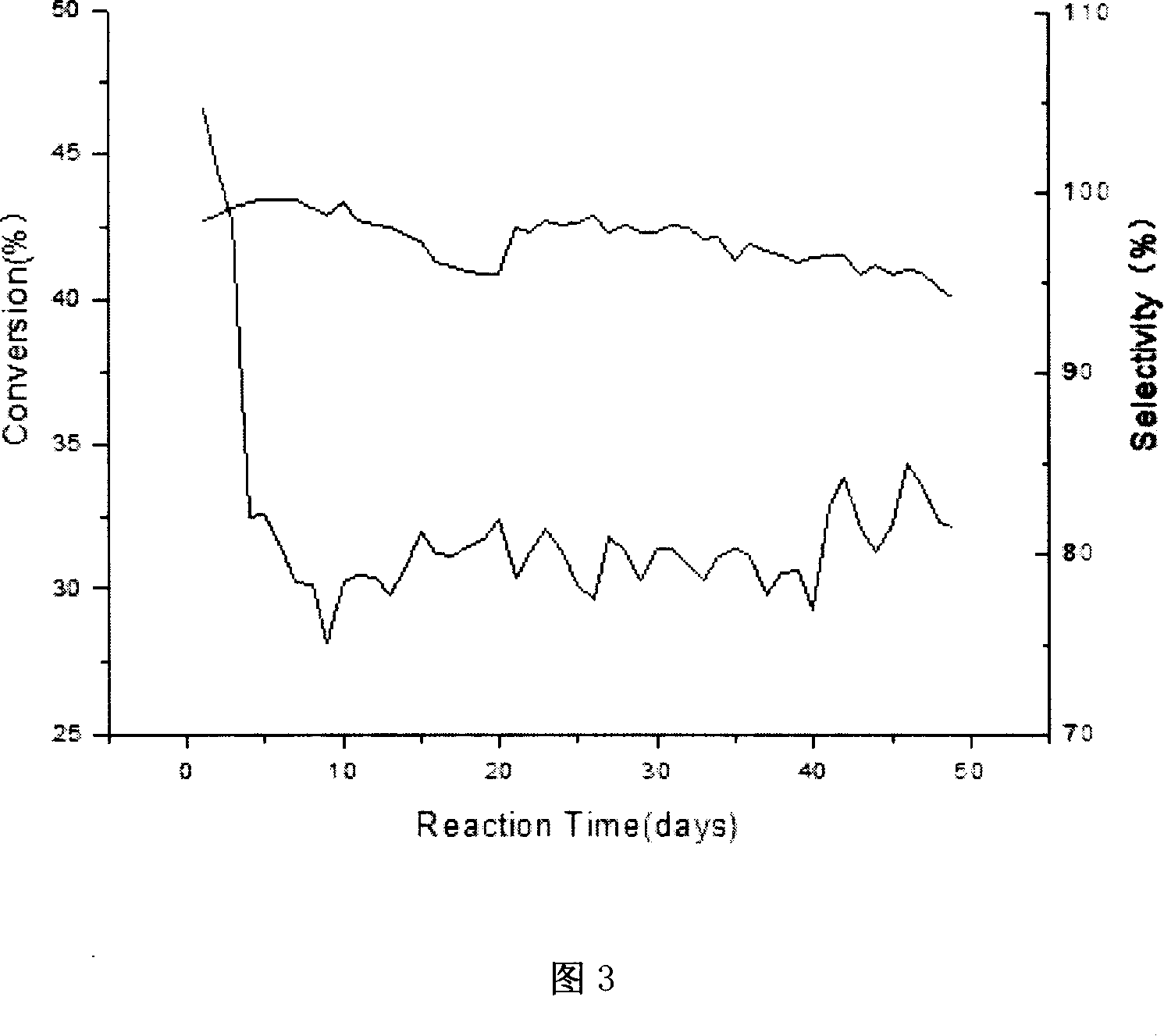Catalyzer used for low carbon alkane catalytic dehydrogenation and method of manufacturing propylene by paraffin hydrocarbons catalytic dehydrogenation with the same as catalyzer
A technology for catalytic dehydrogenation and low-carbon alkanes, which is applied in the field of catalytic dehydrogenation of paraffins to propylene, can solve problems such as no reports of industrial applications, achieve significant social and economic benefits, optimize utilization, and alleviate the increasing demand for propylene Effect
- Summary
- Abstract
- Description
- Claims
- Application Information
AI Technical Summary
Problems solved by technology
Method used
Image
Examples
Embodiment 1
[0024] Firstly, ion-exchange HZSM-5 molecular sieve with a carrier silicon-aluminum ratio of 120 and NaCl aqueous solution, and then magnetically stir at 80°C for 4 hours, then dry at 150°C for 5 hours, so that a certain amount of sodium ions are loaded on the carrier. Then, the carrier containing sodium element was exchanged with chloroplatinic acid solution, magnetically stirred at 80° C. for 4 hours, dried at 150° C. for 5 hours, and then calcined at 500° C. for 6 hours. The tin tetrachloride solution is impregnated with the twice-exchanged carrier, and the drying and roasting conditions are the same as before. Add 20% alumina to the prepared catalyst powder and extrude it. The finished catalyst contains Pt0.5%, Sn2%, Na0.4%.
[0025] The dehydrogenation reaction of the present invention adopts a fixed-bed reactor, and the initial reaction temperature is 580°C, which is gradually increased according to the reaction conditions, and the final temperature reaches 620°C, the p...
Embodiment 2
[0027] Firstly, ion-exchange HZSM-5 molecular sieve with a carrier silicon-aluminum ratio of 120 and NaCl aqueous solution, and then magnetically stir at 100°C for 4 hours, then dry at 150°C for 5 hours, so that a certain amount of sodium ions are loaded on the carrier. Then, the carrier containing sodium element was exchanged with chloroplatinic acid solution, magnetically stirred at 100° C. for 4 hours, dried at 150° C. for 5 hours, and then calcined at 500° C. for 6 hours. The tin tetrachloride solution is impregnated with the twice-exchanged carrier, and the drying and roasting conditions are the same as before. Add 20% alumina to the prepared catalyst powder and extrude it. The finished catalyst contains Pt0.5%, Sn2%, Na1.2%.
[0028] The initial reaction temperature is 590°C, gradually increased according to the reaction conditions, and the final temperature reaches 620°C, the pressure is 0.1MPa, and the gas space velocity is 3.5h -1 . The average value of result conv...
Embodiment 3
[0030]As another comparative test, ZSM5 with a silicon-to-aluminum ratio of 100 was used as a carrier, other preparation conditions of the catalyst were the same as above, and the reaction conditions were the same as in Example 1. The silicon-aluminum ratio of the carrier molecular sieve has obvious influence on the performance of the catalyst. Experiments have confirmed that catalysts prepared by molecular sieves with too high or too low a silicon-to-aluminum ratio basically or completely lose their dehydrogenation performance (see Figure 3).
PUM
 Login to View More
Login to View More Abstract
Description
Claims
Application Information
 Login to View More
Login to View More - R&D
- Intellectual Property
- Life Sciences
- Materials
- Tech Scout
- Unparalleled Data Quality
- Higher Quality Content
- 60% Fewer Hallucinations
Browse by: Latest US Patents, China's latest patents, Technical Efficacy Thesaurus, Application Domain, Technology Topic, Popular Technical Reports.
© 2025 PatSnap. All rights reserved.Legal|Privacy policy|Modern Slavery Act Transparency Statement|Sitemap|About US| Contact US: help@patsnap.com


